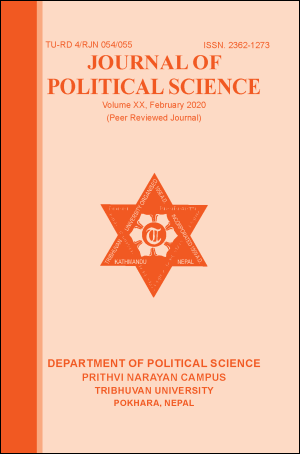Models of Constitution Making with Reference to Nepal
DOI:
https://doi.org/10.3126/jps.v20i0.31793Keywords:
Constitution, models, process, participation, stateAbstract
Constitution is commonly called as the foundation, framework, guideline, roadmap, charter, established rule or legal order of government. It is the supreme and fundamental law of the state because constitution gives legitimacy or validity to all laws and no laws surviving against the constitution. Law is valid only if it is in conformity with the constitution. Constitution being the basic and organic law of land the process of its making is quite important. Constitution making is the act of creating and reforming the body of fundamental principles that govern a state. Constitution making is, therefore, a critical entry point for shaping the future of a country, the exercise of power and the social compact among citizens and between citizens and their state. There is no universal rule, formula, exact method or model for making a constitution. There are several models used in constitution making such as commission model, expert model, constituent assembly model, referendum model, draft committee model, gift model, colonial model, adherence model, peace negotiation model, national conference model, etc. The models of constitution making is selected according to geographical, social, cultural, religious, economic, historical, political and legal system of a concerned country. Hence, in this article the author clearly presents the clear perspectives of constitution, constitution making and the popular models and the procedures used in making constitution with reference to Nepalese experiences and instances.




